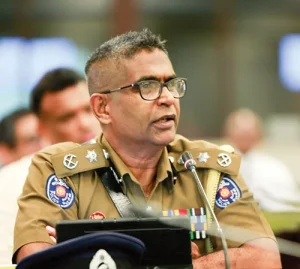Midweek Review
Should Sri Lanka Neglect Latin America and the Caribbean?

By Dayantha Laksiri Mendis
Dayantha Laksiri Mendis was the former Director of the Bandaranaike Centre for International Studies (BCIS). He was also Ambassador to Austria and Permanent Representative to the UN in Vienna. He has worked and travelled extensively in Latin America and the Caribbean region as UN and Commonwealth Legal Expert/Adviser. At present, he is the Honorary Consul for the Republic of Guyana in South America. Latin America and the Caribbean is a neglected area in Sri Lanka’s foreign policy-making, academic research, and scholarship. The broad focus of this article is to give an overview of Latin America and the Caribbean. The narrow focus is to ascertain as to how Sri Lanka could improve relations with this region in a beneficial manner. This approach would be more relevant than a mere description of Latin America and the Caribbean, since Sri Lanka has recently decided to establish closer relations with this region for a variety of reasons.
First of all, it is useful to define the terms ‘Latin America’ and ‘the Caribbean.’ The term ‘Latin’ refers to those persons who speak the Spanish language, and thus the term ‘Latin’ refers to the Spanish speaking states in the Americas. The Caribbean has a different definition. It refers to independent and dependent territories in the Caribbean Sea. The independent states belonged to several ex-colonial powers such as Britain, France, and the Netherlands. These island states are also called the West Indies. However, in recent terms, with the birth of the Association of the Caribbean States (1994), the term ‘Caribbean’ is re-defined to include those countries which are abutting the Caribbean Sea in South America and Central America, in the same way as states belonging to the Indian Ocean Rim Association (IORAC) are determined.
Overview
A short overview by reference to the geography, history, and culture is necessary to understand the major issues confronting this region, before we consider their relevance to Sri Lanka.
Geographically the Latin American states spread from Mexico in North America to Argentina in South America. The land area exceeds 7.9 million square miles, and equals the landmass of Europe, and the US combined. In distance, it covers roughly an area from London to Cape Town. It is quicker to fly from Rio de Janeiro to Johannesburg than from Mexico City to Buenos Aires. This would demonstrate that Latin America and the Caribbean constitute a vast area.
It is important to note that Brazil is bigger than India in size, and Amazonia is the largest repository of biodiversity and constitutes the world’s largest ‘sink’ for carbon dioxide (CO2). The Galapagos is an off-shore island of Ecuador, where Charles Darwin wrote his famous book on The Origins of the Species to dispute the birth of homo sapiens to the horror of theologists.
Latin America can be further classified into several sub-regions such as the Andean States, Central American States, and Rio de la Plata. Similarly, the Caribbean can also be classified into Eastern, Western, Northern, and Southern Caribbean States. Eastern Caribbean is further classified into Windward and Leeward Islands. The Caribbean is now one of the most beautiful, up-market and popular tourist destinations in the world, with a galaxy of off-shore financial centres.
Historically, it must be emphasised that Latin American and the Caribbean civilisations were in existence before the arrival of Christopher Columbus to the New World over 500 years ago. In fact, the Mayans in Belize, Aztecs in Mexico, and the Incas in Peru had sophisticated civilisations. It is, therefore, a myth to say that Christopher Columbus “discovered” the Latin America and the Caribbean as if these civilisations and states were not in existence in the early 16th century. Since the conquest of these areas by the Spanish conquistadors and other colonial powers, the whole face of Latin America and the Caribbean changed rapidly. Approximately 14 million slaves from Africa, and later indentured labour from India, were shipped to this region for sugar and coffee plantation, and the original inhabitants of this region were decimated by the European powers, through the colonisation of the New World.
This region has contributed to the international community in literature, art, music, and sports in a substantial manner. In the arts—the famous Pablo Casals, Pablo Neruda, and the artist Pablo Picasso lived in Latin America. They have also produced a number of Nobel Prize winners. In sports, the West Indies, the former British Colonies in the Caribbean Sea dominated the game of cricket. Both Argentina and Brazil dominated the soccer scene. In music, the Latin American rhythms such as the Tango, Bossanova, Cha-cha-cha, Rhumba, and many other rhythms are popular in many parts of the world. The Calypso and Reggae rhythms, as well as the wonderful sonorities of the Caribbean Steel Drums, are taught and played in many Western capitals for the listening pleasure of millions of people throughout the world.
Relations with the US
This region cannot be fully understood without reference to the US. Since the promulgation of the Monroe Doctrine (1823), the US excluded any extra-hemispheric rivals from this region. It has followed a ‘hegemonic’ policy in the region in the Cold War period and interceded in the internal affairs of those states. It has sent troops to Dominican Republic, Panama, Nicaragua, Haiti, and Grenada in the recent past.
In the landmark Paramilitary Activities Case in 1986 (Nicaragua v. the US) the International Court of Justice (ICJ) held the mining of the Nicaraguan harbours and support to the Contras by the US was contrary to international law. The US continues to hold a tough stance on Cuba. It has passed the Helms-Burton Act to prevent other states from doing business with Cuba in regards to expropriated property4. However, at present, the most sensitive factor in US-Latin relations is the drug problem. The US holds a very strong position with regard to the extradition of traffickers. Nonetheless, the US is the driving force behind the economic expansion of this region through the North American Free Trade Agreement (NAFTA), Caribbean Basin Initiative (CBI), and several aid programmes.
Major Issues
It is important to understand the major issues confronting this region, and how the region has dealt with these issues are of relevance to Sri Lanka. Firstly, the question of promoting economic development is of paramount importance. The debt crisis in Latin America in the 1970s and 1980s has created difficulties for this region and will continue into the new millennium. The Latin American debt crisis arose because this region was unable to pay their debts which they borrowed from foreign banks. As this crisis began to grow, countries like Argentina and Brazil were really affected as they had to pay at least 50% of their Gross Domestic Product (GDP) in servicing the debt. The Baker Plan (1986) and Brady Plan (1989) ameliorated this situation but the debt crisis still continues to be a major problem in this region5.
Another important issue is the shift from dictatorship to democracy. In most Latin American countries, there are no tin-pot dictators. Most have gone back to multi-party democracy through Presidential systems or the Westminster model.
Under Carlos Menon, Argentina has reverted to a Presidential system of government. Chile, Nicaragua and Panama have now established a democratic system of government. In most Latin American countries, democracy is the order of the day and dictatorships have taken a back-seat.
Finally, the viability of mini-states in the Caribbean is another major issue on the international agenda. After COVID, the mini-states are likely to suffer tremendously in the global economy. Previously, the Banana Issue has created huge trade disputes between the US and the European Union in regard to its preferential treatment. The viability of these states has been taken up at several Commonwealth Summits. A recent report on vulnerability by consultative groups of the Commonwealth Secretariat suggests many recommendations to overcome these difficulties.
Can we benefit from this region?
Sri Lanka can benefit a great deal from this region. The language barrier, lack of diplomatic representation, and geographic distance elude us from benefiting from this region in the following spheres.
Firstly, Latin America has taken a lead role in creating a ‘new platform’ to deal with the questions of globalisation and liberalisation of trade in a more effective manner at international fora. Jorge Castaneda’s initiative Alternativa Lationamericana provides a Latin answer to neo-liberalism. This initiative is of significant value to South Asia, and in particular to Sri Lanka, as we share similarities with this region
Secondly, the Caribbean experiment with off-shore financial services is relevant to Sri Lanka at this moment. It is indeed a success story. The Caribbean off-shore companies and banks have attracted high net worth individuals and corporate clients. It has created new employment opportunities and numerous benefits to a large number of Caribbean citizens. It is an experiment which can be copied easily, and therefore it has some value in making Sri Lanka an off-shore financial centre (OFC) in South Asia. If Sri Lanka can be developed as an OFC to India and other Asian states in the same way as Mauritius is to India, we can expect some offshore banks and trusts and offshore companies to establish offices in Sri Lanka to do business with other Asian giants especially in providing insurance and syndicated loans.
Thirdly, if Sri Lanka were to encounter difficulties of importing oil from the middle east countries, we may have to import oil from Latin America and Caribbean and our good relations with this region can help Sri Lanka to rely on them in a crisis situation. The Republic of Guyana is now emerging as a new oil producing country in this region.
Improving relations with this region
This is a neglected area in Sri Lanka’s foreign policy-making. Successive governments have failed to establish closer relations with this region. In this regard careful cost-benefit analysis should be undertaken in foreign policy making
Sri Lanka cannot afford to neglect this region since it provides a veritable avenue for export for manufactured goods, tea, coconut, cinnamon, and rubber products to Latin America, and precious stones especially to the Caribbean destinations, since these island states attract up-market tourist trade, through a network of cruise ships. India dominates the gem trade in the Eastern and Southern Caribbean. St. Maarten and Aruba are havens for gems and jewellery businesses and provide an avenue to market these products to high net-worth individuals. We have a comparative advantage in certain goods and services, too numerous to mention in specific terms in this short article. Hence, the selection of the appropriate countries for trade and diplomatic representation and penetration is of crucial importance.
It is also important to have closer relations, since any Sri Lankan who is vying for an international position in the future has very little chance to succeed without the support of this region. Almost, two decades ago, Judge Professor Christy Weeramantry, who was not a traditional diplomat, knew this too well in his election to the ICJ and worked extremely hard through expatriate Sri Lankans to win their support. On my invitation, he attended the Caribbean Heads of State Meeting in St. Kitts and Nevis and was able to form links with several Heads of State.
It is axiomatic that Sri Lankas relations cannot improve without adequate diplomatic and trade representations. It is unfortunate we have Ambassadors in Brazil and in Cuba and the Honorary Consuls in some Latin American and Caribbean countries. Cuban representation is for political rather than economic reasons, but this Embassy can be upgraded with proper accreditation to establish better relations with the neighbouring English-speaking Caribbean countries in the region. In the long run, Cuba might be the number one tourist destination for North American tourists, and therefore we must get prepared to build good economic relations with Cuba, as the sale point for some of our goods to the tourists who may arrive from North America. It is unclear as to why the Caribbean states are served from the Sri Lankan Embassy in Washington DC and New York and not from Havana, Cuba—the heart of the Caribbean.
Recently, Sri Lanka obtained Observer status in the Organization of American States (OAS). It is a step in the right direction. It is also useful for Sri Lanka to join the Association of Small Island States (AOSIS) at least as an observer to improve relations with small island states in the Caribbean.
It is impossible to improve relations with this region without a good knowledge and understanding of Latin America and the Caribbean. Sri Lanka needs to send ambassadors who can speak the language and understand the culture of Latin America and the Caribbean to maximise the benefits and good relations with this region
Midweek Review
A second killing in a courtroom, a question of national security and overall deterioration of law enforcement
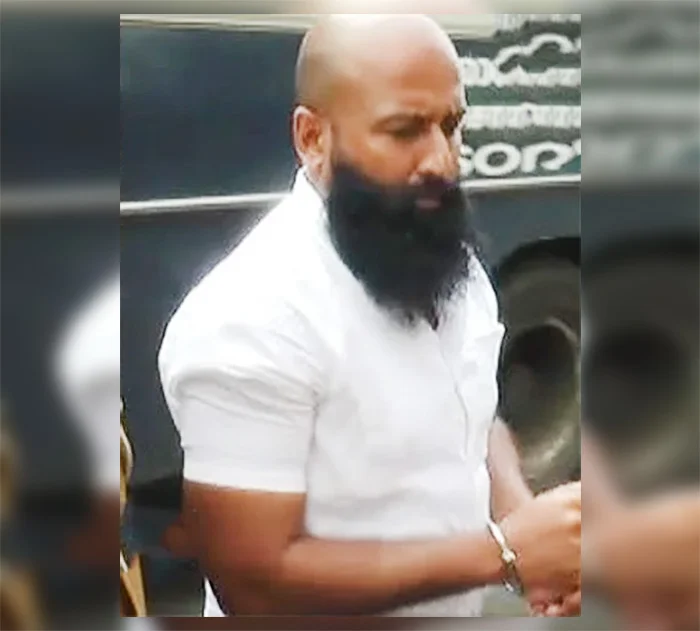
Against the backdrop of Public Security and Parliamentary Affairs Minister Ananda Wijeyapala’s declaration in Parliament of a nexus between the underworld and some sections of the administration, particularly the police, Pubudu Jagoda of the Frontline Socialist Party (FSP) demanded to know as to why Ganemulle Sanjeewa
IGP Priyantha Weerasooriya
had been produced in court on February 19 without a court order. The FSP spokesman emphasized that the crux of the matter is why he had been brought to court in the absence of a court directive and despite there having been specific intelligence that an attempt was to be made on the suspect’s life on that day as disclosed by Acting IGP Priyantha Weerasooriya at a hastily called media briefing at the Information Department over the last weekend.
By Shamindra Ferdinando
Two shootings at Kadewatte junction, Middeniya, on Tuesday night (18), and at the Colombo Hulftsdorp Court complex, the following day, quite conveniently deprived Parliament of an opportunity to conduct a proper debate on President Anura Kumara Dissanayake’s first Budget delivered on February 17th. The reportage of the Budget debate proved that it was a non-event as it was overshadowed by the audacious killing of Ganemulle Sanjeewa as he stood in the dock of the Hulftsdorp Magistrate Court number 05.
The Middeniya shooting claimed the lives of three persons – Aruna Vidanagamage aka Meegas-are Kajja, 39, and his six-year-old-daughter and nine-year-old son. Vidanagamage captured public attention recently when the gangster, in a no holds barred interview with Chamuditha Samarawickrema in ‘Truth with Chamuditha,’ accused the Rajapaksa family and some of its henchmen of criminal activity. Vidanagamage alleged that a person (who was named), close to the Rajapaksas, had given a contract to kill him though he didn’t believe the family was aware of the move.
A policeman, attached to the Tangalle Police, is among the three persons who have been so far taken into custody in connection with the Middeniya triple killings. However, the police constable hadn’t been apprehended for his involvement with the killing but for giving two pairs of handcuffs that were found at the scene of the shooting that had been given to “Kajja” earlier by him. The unauthorized transfer of handcuffs to a criminal by a cop underscored the gravity of the situation. The revelation reflects the overall deterioration of law enforcement. Recently, another cop, attached to the Mount Lavinia Police, gave his service weapon to the drug underworld and escaped to Dubai.
The Hulftsdorp shooting that claimed the life of Sanjeewa Kumara Samararathne, alias Ganemulle Sanjeewa, sent shock waves through the inept law enforcers. The killing inside the No. 05 Magistrate’s Court and the arrest of the gunman under controversial circumstances highlighted the deficiencies in overall law enforcement.
Ganemulle Sanjeewa, who had been arrested on Sept. 13, 2023, at the Bandaranaike International Airport (BIA), on his arrival from Nepal, was the second person in custody to die in a hail of bullets inside a courtroom.
The Opposition, in an obvious bid to exploit the developing situation, claimed a breach of national security. The National People’s Power (NPP) was accused of jeopardizing the security of the state. The government dismissed that assertion while claiming the Hulftsdorp shooting as an isolated incident. The actual truth lies somewhere in between with widespread despicable behaviour of law enforcers all over the country, with corrupt cops being brazenly involved in lucrative underworld businesses, especially in facilitating and milking the deadly narcotic trade. Some Opposition lawmakers called for Public Security and Parliamentary Affairs Minister Ananda Wijepala’s resignation. The Jathika Jana Balawegya (JJB) would have done the same if some other party wielded political power now.
A member of the main Opposition Samagi Jana Balawegaya (SJB) compared the Hulftsdorp security lapse with that of the 2019 Easter Sunday carnage. SJB lawmaker Rohana Bandara’s appraisal is obviously a case of going overboard. The Sri Lanka Podujana Peramuna (SLPP) and the National Democratic Front (NDF), too, attacked the Budget calling it an IMF product.
The first courtroom killing took place during Chandrika Bandaranaike Kumaratunga presidency. Before we discussed that high profile killing of notorious underworld figure Dhammika Amarasinghe on a Friday morning in early January 2004, at the Colombo Chief Magistrate’s court, in the same court complex as last week’s brazen killing of a notorious suspect Sanjeewe, as he stood in the dock, by an Army deserter Chaminda Udaya Kumara, 28. It goes without saying the responsibility on the part of the armed forces to tighten up discipline and recruiting procedures is utmost, especially now long after the earlier debilitating terrorist threat, as there is no longer any necessity to absorb anyone who turns up for recruitment as the forces are no longer desperately short of manpower to fight a debilitating war like earlier against the world’s deadliest terrorist force with a conventional fighting capability.
Assassin Chaminda Udaya Kumara, responsible for the 2004 killing, entered the courtroom as a law student. In the latest such daring killing last week, the gunman disguised himself as an Attorney-at-Law.
Chaminda Udaya Kumara had been apprehended in the record room where he was overpowered by a Lance Corporal of Sri Lanka National Guard (SLNG) and handed over to the police. On both occasions, the assassin hadn’t been subjected to checks. It would be pertinent to mention that Dhammika Amarasinghe’s assassin had made an attempt to escape by taking a person hostage and opened fire causing injuries to two persons before the SLNG soldier swung into action.
Ganemulle Sanjeewa’s killer had joined the Army 12 years after the successful conclusion of the war against the Liberation Tigers of Tamil Eelam (LTTE). Therefore, he hadn’t served the then Lt. Gen. Sarath Fonseka’s war-winning Army. Although some speculated that the assassin had joined the Army as a Muslim, inquiries, however, revealed that was not the case. Asked to explain, an authoritative officer pointed out that it wouldn’t be fair to identify the assassin as a commando as he had undergone only the basic course.
According to Army records the assassin joined the Army in 2020 and was legally discharged after he was found guilty of going AWOL (absent without leave) in 2023. Accused of using several identities, the assassin, immediately after his arrest at Palaviya, identified himself as Mohamed Azman Sherifdeen. At the time the Army discharged the assassin, he had been with the 3rd Commando Regiment.
The real identity of the assassin, born in 1997, is Samindu Dilshan Piyumanga Kandanaarachchi, a resident of Dambahena Road, Maharagama.
When did the assassin start using fake identities? How had he obtained a fake BASL ID? Who could have arranged the deadly mission? Let us once again emphasise that shortcomings on the part of the Army could have been ignored if such deceptions took place during the war as the military was desperate to double its strength but over a decade and a half after the war such lapses couldn’t be justified, under any circumstances.
First killing in a courtroom
Contract killer Dhammika Amarasinghe had been under investigation in a headline grabbing case involving the then Telecom and Sri Lanka Cricket (it was called Sri Lanka Cricket Board at that time) chief Thilanga Sumathipala, accused of funding the gangster as a guest of the SLC to watch the 1999 Cricket World Cup in the UK. Investigations revealed that the assassin, who travelled to the UK, allegedly on a fake passport, had received SLC funds to the tune of 1,500 Sterling Pounds.
Amarasinghe was to be produced in court on the following Monday to answer questions regarding the UK sojourn at the SLC’s expense. Sumathipala, who was to appear in court on Thursday, the day before Amarasinghe’s killing, didn’t attend court, claiming sudden illness.
At that time no one alleged it wasbreach of national security though it was a highly politicized case. However, Dhammika Amarasinghe was taken out inside a court when produced before it over two murder cases – one at Borella and the other at Welikada. Before Dhammika Amarasinghe’s killing, his rivals killed 16 of his relatives.
Investigations revealed that the gunman had been in the same court when Dhammika Amarasinghe was produced in court pertaining to Thilanga Sumathipala’s case on the previous day.
The assassin claimed that he took out Dhammika Amarasinghe to avenge the killing of Dhanushka Perera aka Baddegane Sanjeewa of the Presidential Security Division (PSD).
Then President Kumaratunga’s security chiefs accommodated notorious gangster Baddegane Sanjeewa in the PSD and issued him an official weapon. Unfortunately, he hadn’t been the only ruffian taken to the PSD during her tenure as the President. President Ranasinghe Premadasa is believed to have absorbed notorious gangster Soththi Upali to the police reserve as a Sub Inspector.
Investigations revealed that Baddegane Sanjeewa’s assassin travelled with him in the luxury vehicle when he was shot from the back seat. Investigations also revealed that at the time the PSD thug had been shot he was on his mobile with Venessa Selvaratnam who earned significant media coverage over the killing of Papua New Guinean ruggerite Joel Pera inside a casino in a case that also allegedly involved the late Minister Anuruddha Ratwatte’s son Lohan. The killing of the PSD hoodlum took place at a cross street, off Pagoda Road, in Nugegoda.
In spite of accusations that Baddegane Sanjeewa carried out a spate of attacks, including the killing of Sinhala tabloid editor Rohana Kumara, the then SLFP-led People’s Alliance (PA) simply ignored complaints. The notorious PSD cop was killed at the height of his political influence. Rohana Kumara, who carried out a relentless campaign through his newspaper, targeting President Kumaratunga’s administration, was shot dead on the evening of Sept. 07, 1999 near his Colombo home.
During Kumaratunga’s tenure, the PSD also attacked popular singing couple Rookantha Goonetilleke and Chandraleka Perera after invading their home in the presence of their children, at Mattegoda, in January 2000. Ten officers were found guilty of the dastardly act and ordered, in 2013, to pay Rs 200,000 compensation each to the two victims and also sentenced to four and a half years imprisonment, but they were granted a presidential pardon in 2014.
A budget aligned with IMF
There hadn’t been a previous occasion when a government presented a budget totally in line with dictates of the International Monetary Fund (IMF) though there were numerous agreements/understandings between successive governments and the Washington-based lending bodies.
President Dissanayake, in his capacity as the Finance Minister, revealed in Parliament what his government had agreed with the IMF. There is no doubt Finance Secretary Mahinda Siriwardana and Governor of the Central Bank Dr. Nandalal Weerasinghe played quite significant roles in keeping the country in line with the IMF’s agenda.
Regardless of a section of the Opposition condemning President Dissanayake for adhering to IMF dictates, it would be pertinent to mention that the Parliament, in July last year, endorsed the Economic Transformation Bill (ETB) without a vote. The Parliament reached consensus on that unprecedented Bill to ensure that the country remained committed to the four-year-long IMF programme, finalized on March 20, 2023 during the previous Wickremesinghe regime.
SJB leader Sajith Premadasa, SLPP National Organizer Namal Rajapaksa, as well as a spokesperson for the New Democratic Front (NDF), was backed by former President Ranil Wickremesinghe. The five-member NDF parliamentary group, comprising ex-SLPPers and ex-UNP Minister Ravi Karunanayake, should explain why they accepted the ETB without a vote. In terms of the four-year Extended Fund Facility (EFF) arrangement, the IMF approved SDR (Special Drawing Rights) 2.3 bn (about USD 3 bn).
The SJB and SLPP shouldn’t play politics with the issues at hand as both parties are equally responsible for the economic decline caused by long-time mismanagement of the national economy. The SJB conveniently forgets that it had been part of the UNP, during Yahapalanaya, and cannot, under any circumstances, absolve itself of the responsibility for the Treasury bond scams, perpetrated in Feb. 2015 and March 2016, and issuance of USD 10,000 mn in new ISBs (International Sovereign Bonds) between 2015 and 2019 by that treacherous administration, comprising the UNP and the SLFP. New ISBs debilitated the economy. That is the ugly truth. And as to what they did with that money and the USD 1.2 billion they got by leasing out Hambantota International Port to the Chinese on a 99-year-lease, is anybody’s guess. Surely the country’s assets did not increase during the tenure of that government by any stretch of our imagination to show for such influx of US dollars.
At the time Mahinda Rajapaksa had been voted out in January 2015, the outstanding ISB debt was only USD 5,000 mn. The Gotabaya Rajapaksa government (2020-2022) had paid off USD 2,500 million in outstanding ISBs, which meant that only USD 2,500 million in ISBs remained at the time Yahapalanaya took over in 2015.
But when the US-backed Aragalaya overwhelmed the Rajapaksas, they invited the man who oversaw Yahapalanaya, economic strategy Ranil Wickremesinghe, to save their skin. No less a person that former President Mahinda Rajapaksa is on record as having said that taking ISB’s amounting to USD 10,000 mn broke the back of the Sri Lanka’s economy. Then why on earth the person who caused that destruction was invited to accept the premiership in May 2022 and then elected President in July through a vote in Parliament. All in fear of deranged or highly drugged mobs unleashed during Aragalaya as was the case later in Bangladesh. But the Aragalaya marauding mobs, who were threatening to die for a system change, just vanished into thin air once Ranil Wickremesinghe was installed in the seat of power. How convenient?
The SLPP shouldn’t find fault with President Dissanayake for adhering to a Bill that received the blessings of all political parties, as well as breakaway factions, represented in Parliament. There cannot be a better example than the dissident SLPP group, led by Prof. G. L. Peiris and Dullas Alahapperuma, as they, too, endorsed the ETB by conveniently backing the decision to go ahead without a vote.
The SLPP that won 145 seats at the 2020 August general election had been reduced to just three lawmakers, including one National List slot, at the last general election. Unfortunately, the party hadn’t yet understood why the electorate dealt with the party so harshly. It should take remedial measures to rebuild the shattered image and attract the public again.
A far worse security breach
The JVP, now in power, caused, perhaps, far worse security breach than the killing of Ganemulle Sanjeewa, though none of the political parties, seeking to take advantage of the developments, failed to mention the JVP bid to wipe out the top UNP leadership in August 1987.
The writer was at The Island editorial on the morning of August 18, 1987 when a JVPer lobbed two hand grenades at the UNP parliamentary group meeting in Committee Room A at the Parliament building. The near simultaneous blasts targeted about 120 MPs present at the meeting, the first group meeting after the signing of the Indo-Lanka accord on July 29, 1987. President J. R. Jayewardene presided over the meeting. Premier Ranasinghe Premadasa was present. Luckily for the UNP, the blasts caused injuries to several lawmakers but only Matara District MP Keerthi Abeywickrema succumbed to his injuries. The writer, having joined The Island just two months before, covered that funeral in Matara held under heavy security as the then government feared the JVP would launch an indiscriminate attack. It was the second killing of an MP by the JVP, following the deployment of the Indian Army in the northern and eastern provinces in terms of the so-called peace accord that was forced on Sri Lanka to halt ‘Operation Liberation’ carried out in the Vadamarachchy region of the Jaffna peninsula.
Later, the police identified the attacker as R.M. Ajith Kumara, an employee at the Parliament after he was arrested at Akaranduwa, Naula, on April 08, 1988, during a raid on an illicit liquor den. The chance and subsequent interrogation of the suspect revealed him as the man who planned the mass murder of lawmakers.
Ajith Kumara and four others were charged with carrying out the August 18, 1987, grenade attacks on the UNP parliamentary group. However, the Colombo High Court at Bar, on Oct. 12, 1990, delivered a unanimous verdict acquitting Ajith Kumara. Delivering the verdict, High Court Judge Ananda Grero declared that the prosecution had not proved the charges beyond a reasonable doubt.
Declaring his allegiance with the JVP, Ajith Kumara entered politics and was later accommodated in the JVP politburo. Ajith Kumara served as a JVP Pradeshiya Sabha member and years later contested Sabaragamuwa Provincial Council poll as the JVP’s Chief Ministerial candidate. The rest is history.
Midweek Review
Will AKD’s ‘Glasnost and Perestroika’ moment redefine Sri Lanka’s destiny?
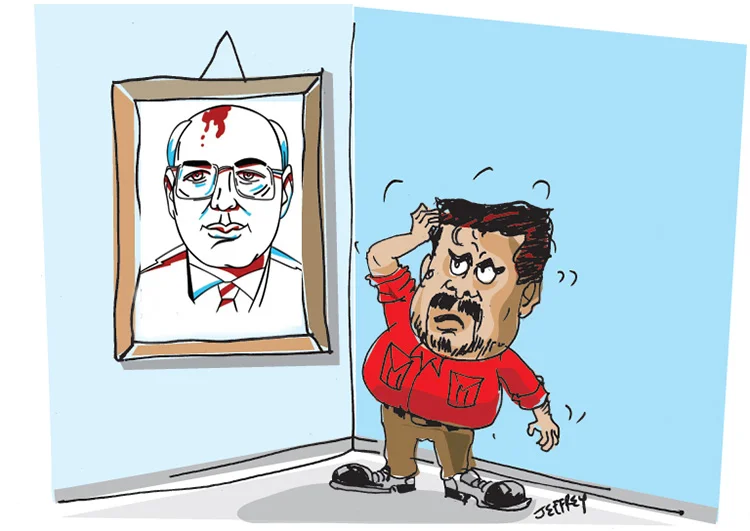
By Gamini Jayaweera
In 1985, former Soviet leader Mikhail Gorbachev, who assumed the presidency of the USSR, sought to reform the Soviet Union’s centrally planned economic system, which had been stagnant for several years. He recognised that the rigid one-party rule political system, including its politicians, was plagued by corruption, the workforce was inefficient, technology was outdated, and citizens struggled to access basic goods and services. Additionally, democratic rights for the people and the media were severely restricted. All of this was occurring under a communist system of government in a vast nation.
Gorbachev’s attempt to reform Russia’s struggling economic, social, and political systems through his Glasnost (openness) and Perestroika (restructuring) initiatives failed. This was largely due to resistance from the Central Committee of the Communist Party, which was dominated by hardline communist ideologists opposed to Western-style economic and political reforms. This resistance, combined with a failed coup, ultimately weakened Gorbachev’s authority, paving the way for Boris Yeltsin, whose neoliberal reforms transformed Russia’s political landscape.
Decades later and thousands of miles away, Sri Lanka faces its own political, economic, and social challenges. President Anura Kumara Dissanayake (AKD) and his coalition, the National People’s Power (NPP), rose to power amidst a bankrupt economy, decades of political corruption, a largely inefficient and overstaffed state workforce, use of outdated technology, and mounting debts hindering development. Despite operating within a democratic system, the underlying challenges appear strikingly similar to those faced by Gorbachev, highlighting a parallel between the two countries’ governance mechanisms, but one under communism and the other under the guise of democracy.
AKD is pursuing his economic policy to balance socialist welfare programmes with capitalist economic reforms to revive the economy. Like Gorbachev, AKD’s reforms aim to modernise the Sri Lankan economy without abandoning socialism. The introduction of limited market reforms, decentralising economic control, and encouraging private enterprise may undermine the central authority of the leftist Janatha Vimukthi Peramuna (JVP) which control the lion share of the NPP coalition, leading to political instability and the rise of nationalist movements within Sri Lanka.
However, the political dynamics, including resistance from extreme left-wing factions and right-wing opponents, could determine the outcome of AKD’s ambitious agenda. While history does not necessarily repeat itself, the spectre of political instability remains a concern.
AKD’s “Glasnost and Perestroika”
Creating “A Rich and Beautiful Country” is the bold and inspiring vision articulated by the newly elected President and the parliamentary members of the National People’s Power (NPP) government, as detailed in their manifesto and policy documents. The President of Sri Lanka, a charismatic and inspiring leader of the NPP, recently delivered a heartfelt and enthusiastic address to parliament and the nation.
In his address, he outlined his ambitious vision and expectations for steering our country onto a path of sustainable prosperity. Delivered without the aid of written notes, his speech was a commendable demonstration of his dedication and sincerity. As Sri Lankans, we take pride in the President’s energy and unwavering commitment to turning his vision into reality.
However, this vision, no matter how inspiring, faces critical challenges. Can the NPP government translate the ambitious goals outlined in their policy documents and the President’s impassioned words into tangible outcomes? Achieving such a transformative vision requires a meticulous and coordinated effort, along with all the necessary components to overcome the significant hurdles ahead.
My focus here, rather than attempting an exhaustive analysis, is to highlight a few pressing concerns that demand immediate attention in order to secure the success and integrity of this transformative journey of achieving “Glasnost and Perestroika.” As a hopeful Sri Lankan committed to systemic change, I wish to underscore these concerns within the NPP administration that could impede our collective vision for progress.
NPP Leadership
Effective leadership is the cornerstone of good governance, guiding nations towards progress and stability. In the context of the NPP government, the transition from trade union advocacy to ministerial leadership presents unique challenges and opportunities.
The President and the Cabinet hold the highest level of leadership in the government, serving as the architects of national direction and policy formulation. They entrust the heads of departments with the responsibility of implementing these policies through their ministerial secretaries. However, effective leadership demands clarity and unity. If Ministers and their Secretaries fail to provide a cohesive and unambiguous direction to the department heads within each ministry, the result will be organisational chaos. This challenge is particularly relevant given the leadership background of several ministers in the NPP government.
Several ministers in the NPP government were formerly trade union leaders before their recent appointments to ministerial positions. While their prior roles involved leading, advocating, and vigorously championing the demands of the workforce, particularly in the public sector, ministerial responsibilities require a fundamentally different approach. Administering and addressing the needs of the workforce as the primary representative of the government, which acts as both the “Owner” and “Financier” of public organisations, demands a much more nuanced and balanced perspective.
An assertive, advocacy-driven leadership style must evolve into a more balanced approach that considers the needs of all stakeholders. Without adopting this more inclusive mindset, ministers risk alienating sations, thereby jeopardising the systemic changes, and both short and long-term progress envisioned by the President. So far, we have witnessed some ministers who were affiliated with trade unions in the past not having transformed their new roles to act impartially to unite the management and the workforce in their ministries.
It is also important to acknowledge that this cabinet includes ministers who embody these balanced leadership qualities. The President, along with other senior and experienced ministers, must take the lead in mentoring and guiding the younger, energetic, but less experienced members of the team. By providing direction and fostering a collaborative environment, they can ensure that public expectations are met, and the government stays on course toward achieving its overarching goals.
Humility and credibility
Since the inception of NPP’s governance, a recurring and concerning pattern has emerged among certain ministers, a belief in their own infallibility and a persistent perception that the opposition is perpetually wrong. This mindset not only risks stifling constructive debate but also undervalues the diverse experiences, skills, and ideas that others bring to the table.
A similar tendency can be observed globally, where some politicians treat their political ideologies as the ultimate truth, often dismissing differing perspectives. This approach fosters polarisation and inhibits meaningful collaboration. Within the NPP leadership, it is essential to recognise that, no matter how diligently they work, the attitudes and behaviours of the leadership team can significantly hinder progress.
True leadership demands humility, an often-overlooked quality that is far from a weakness. Instead, humility forms the cornerstone of effective leadership, helping to build trust, foster collaboration, and ensure sustainable success. By embracing humility, leaders can create an environment where diverse viewpoints are valued, and progress is achieved through collective effort.
Integrity among Ministers is essential for gaining the trust and recognition of the public. During the former Speaker’s qualifications controversy, the Opposition justifiably announced plans to bring a no-confidence motion against him for dishonesty.
A Minister who was previously a Trade Union leader, publicly dismissed the motion without examining the facts or acknowledging the embarrassment caused to the NPP government. Such statements demonstrate blind loyalty to party colleagues, lack of experience, responsibility, caution, and trade union mentality. The President, in contrast, declared that “wrongdoing would not be tolerated regardless of rank or position,” a stance that led to the Speaker’s resignation. This demonstrates decisive leadership and a commitment to accountability, qualities that others in government should emulate.
The inexperienced, young Minister in question would do well to take a page from the President’s book. Credibility and integrity, once lost, are nearly impossible to regain. Leaders must exercise care and responsibility when commenting on matters of public concern.
So far, no action has been taken for the allegations that some Members of Parliament from the NPP and the Opposition have given misinformation about their educational qualifications during the election campaigns. It is crucial for the President or the Leader of the House to address these claims promptly to prevent further distractions and maintain public trust.
Cultural Changes and Motivation
Culture is not a “soft” subject, yet most political leaders and public sector organisational heads treat it as if it were. Culture embodies the behaviours of employees and the infrastructure of the organisation. It is the foundation on which success is built.
Driving cultural change is no easy task. A key strategy is to provide comprehensive training that fosters employee engagement and ownership. Sustainable change hinges on behavioural performance, reinforced by a structured system of incentives, support, and motivation.
It cannot be transformed merely through lofty speeches extolling the “honesty” of the ruling party, especially when directed at workers in the public sector. Similarly, continually decrying the “dishonesty” of previous regimes does little to foster meaningful change. Leaders in the NPP should avoid complacency regarding their reputation for “honesty,” as their tenure in government is relatively brief and largely untested.
Importance of the human touch, education, and motivation in achieving success,
especially when tackling complex challenges is essential. There are no quick fixes when it comes to changing human behaviour. Organisational transformation is a gradual, deliberate process, but one that is essential for cultivating a high-performing, responsive public sector which is a major part in the System Change.
Govt. Tender Process
A recent parliamentary debate exposed concerns over the Mannar Wind Farm Project’s tender process. Despite the Tender Evaluation Committee (TEC) and Procurement Appeal Board (PAB) recommending the disqualification of two non-compliant companies, the new Energy Minister annulled the initial process, introduced a fresh tender process, and awarded the contract to an originally rejected bidder. The Minister claimed the new contract was cheaper.
This raises serious concerns about political interference in Sri Lanka’s renewable energy sector. As a professional with nearly 40 years of experience in construction spanning Procurement to Final Accounts in the UK and Sri Lanka, I find this deviation from proper tendering procedures deeply concerning.
A professional tender evaluation considers not just cost but also technical capability, organisational strength, commercial factors, health and safety standards, and relevant experience in similar projects. Low initial bids can often lead to escalated costs through variations and claims, ultimately exceeding the most economically advantageous bid.
If the Minister prioritised cost alone, a direct negotiation with a local contractor would have been more transparent, avoiding wasted public funds and unfair costs to other bidders. This incident casts a serious shadow over the NPP’s commitment to integrity and fair play in the tendering process, raising critical questions about accountability in public procurement.
Conclusion
While the NPP government has been in power for nearly six months, it is understandable that the public’s expectations and scrutiny are high. The trust and hope that the Sri Lankan people have placed in the NPP come with heightened vigilance, as even the smallest misstep by the new administration could be seen as jeopardising what many view as the nation’s last chance to set a sustainable course for the future.
The path to reform will undoubtedly be challenging and fraught with obstacles. Yet, it is a journey we must undertake, not only to honour the hopes of the present but to secure a brighter future for generations to come. It will be interesting to witness the successful implementation of Sri Lanka’s version of AKD’s “Glasnost and Perestroika,” especially since the originator of this concept, former Soviet leader Mikhail Gorbachev, faced significant challenges and ultimately did not achieve his intended outcomes three decades ago.
However, for AKD’s vision to succeed, it is crucial for all citizens to actively support but demand accountability from the President and his Cabinet as they navigate this difficult transformative phase. Their leadership will be vital in uplifting the economic, social, legal, and political systems while enhancing democracy as the foundation for realising Sir Lanka’s own “Glasnost and Perestroika.”
Midweek Review
Market Place Tremors
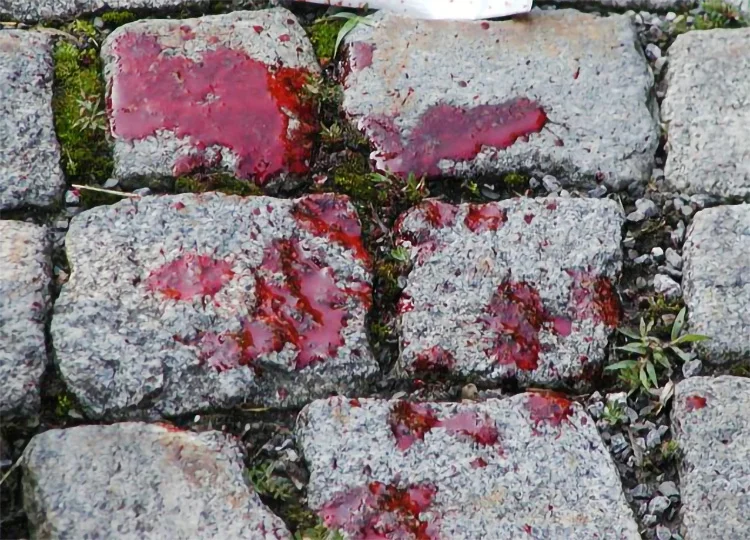
By Lynn Ockersz
He was your regular breadwinner;
Doing his daily routine, prayer-like,
Rushing through his scrap breakfast,
And setting off for state sector chores,
His little daughter on his scooter’s pillion,
He yelling to his wife busy in their back yard,
That he would be picking up the ‘small one’,
At her teeming tuition class that evening,
But as shadows lengthened at day’s end,
They found him sprawled out in a pool of blood,
On a suburban pavement some distance away,
Seemingly, an unintended victim of a paid killer,
But let none look askance at these happenings,
For, when the purses of some folks begin to pinch,
They begin to submit to the market’s dictates,
Which lead them into quite irregular byways.
-

 Business4 days ago
Business4 days agoSri Lanka’s 1st Culinary Studio opened by The Hungryislander
-
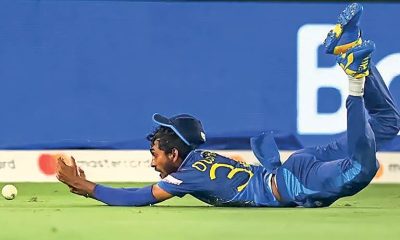
 Sports5 days ago
Sports5 days agoHow Sri Lanka fumbled their Champions Trophy spot
-
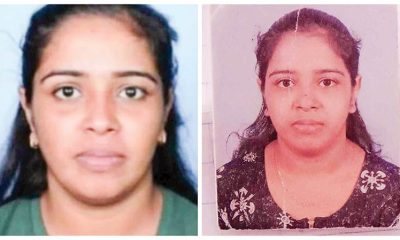
 News7 days ago
News7 days agoKiller made three overseas calls while fleeing
-
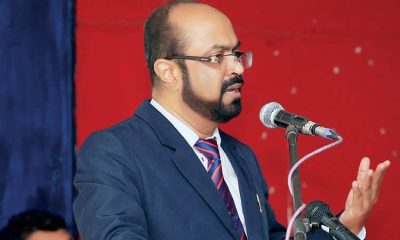
 News6 days ago
News6 days agoSC notices Power Minister and several others over FR petition alleging govt. set to incur loss exceeding Rs 3bn due to irregular tender
-
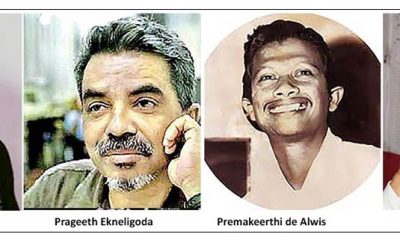
 Features5 days ago
Features5 days agoThe Murder of a Journalist
-
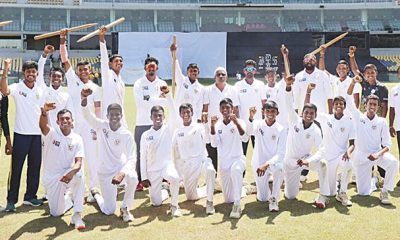
 Sports5 days ago
Sports5 days agoMahinda earn long awaited Tier ‘A’ promotion
-
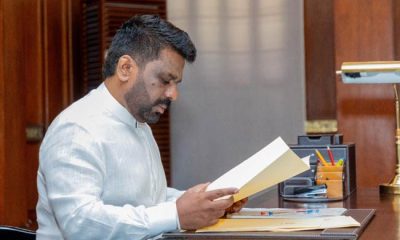
 Features5 days ago
Features5 days agoExcellent Budget by AKD, NPP Inexperience is the Government’s Enemy
-

 News6 days ago
News6 days agoMobile number portability to be introduced in June


